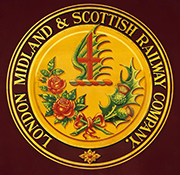

This site uses non-intrusive cookies to enable us to provide a better user experience for our visitors. No personal information is collected or stored from these cookies. The Society's policy is fully explained here. By continuing to use this site you are agreeing to the use of cookies.
From railway rolling stock to railway road motor vehicles is a natural step. The L.M.S. operates no less than 10,000 road motor vehicles, trailers and motor-driven appliances, principally for collection and delivery of goods and parcels traffic. The maintenance organisation for this large fleet is based on five self-contained road motor shops, under the control of district road motor engineers, equipped to carry out all maintenance of the vehicles operating in these areas. Each has a number of satellite repair shops equipped to carry out routine inspections and minor repairs.
The maintenance of this fleet is carried out on a pre-arranged scheme of routine inspections and overhauls. The various operations are carried out on a mileage and/or time basis, whichever is completed first. By this arrangement, vehicles doing a short mileage and heavy tonnage receive inspections every two periods or eight weeks, whilst those running high mileages receive inspections every 1,500 miles.
All worn parts removed during maintenance operations are collected at the district main repair shops, where they are sorted and examined. Parts capable of economical repair by the facilities available are attended to, and the remainder despatched to a central reclamation section. Large plants for purifying and reclaiming used engine oil have been established; in these plants all the dirty oil recovered from engines at periodical oil changes is reclaimed to a condition equal to new, and re-issued.
The success of this maintenance scheme can be judged by the percentage of vehicle days out of service for maintenance purposes which fell from 8.2 per cent. in 1925, to 6.5 per cent. in 1939, while the cost of repairs per vehicle per mile dropped from 2/9d. in 1925 to 1/5d. in 1939.
Four regional schools have been in operation since 1936 for the training of motor drivers, each in charge of an experienced instructor. Trainees are given a full course of driving tuition, including demonstrations of films and models, and practical training on the road. Finally they are examined for their driving certificates by inspectors, whose duties also include the "tuning up" of motors to ensure economy in fuel consumption. Approximately 5,500 men and women trainees have already passed through the schools.
Site contents Copyright © LMS Society, 2024

May 10th, 2024
Site contents Copyright © LMS Society, 2024